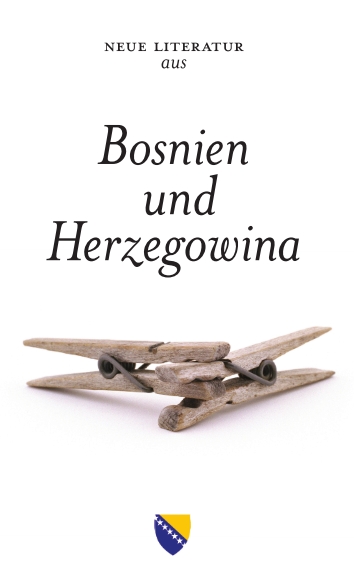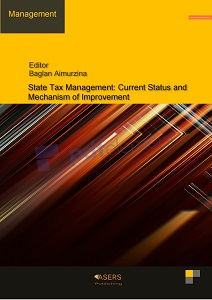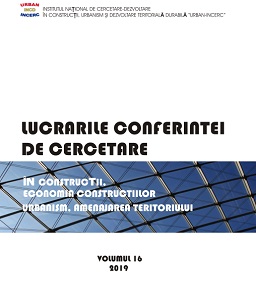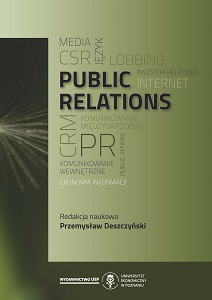
Hadžem Hajdarević
Hadžem Hajdarević
Keywords: Hadžem Hajdarević; Bosnian literature; poetry;
Poems by Hadžem Hajdarević: -Dichters Winter; -Neum; -Ich baue ein Haus; -Afrikanische Tiger.
More...
Keywords: Hadžem Hajdarević; Bosnian literature; poetry;
Poems by Hadžem Hajdarević: -Dichters Winter; -Neum; -Ich baue ein Haus; -Afrikanische Tiger.
More...
Keywords: Stevan Tontić; Bosnian literature; poetry;
Poems by Stevan Tontić: -Das glück der Taubstummen; -Metaphysik des Barbarentums; -Ich sah das Neugeborene; -In der unsterblichen Ulme.
More...
Keywords: organization; management; tax;
Based on the works of leading domestic and foreign economists in the field of the theory and practice of organizing taxes and finance, tax management, fundamental provisions on the development of market economy, the theoretical nature of taxes, which includes the theory and methodology of managing tax relations, tax and non-tax revenues of the state budget of Kazakhstan in new integration conditions. The elements and mechanisms of the functioning of the tax system of the Republic of Kazakhstan are shown.
More...
Keywords: tax policy; state; real sector; economy;
The study obtained the results of theoretical and methodological approaches to the formation and implementation of the tax policy of Kazakhstan, summarized and systematized the main ways of tax reform of the Republic of Kazakhstan, aimed at simplifying the tax system and improving the efficiency of tax control.
More...
Keywords: approach; real economy; state; integration;
Economic content of the state tax management of the real sector of the economy in the new integration conditions is disclosed and the characteristic of its functional elements is given. The main aspects of the methodology for assessing the state of the state tax management of the real economy and the assessment of its current state are substantiated. Methodological and organizational approaches, as well as strategic directions for the development of the management of the economy of tax and non-tax revenues of the state budget of the real sector, are defined.
More...
Keywords: sustainability development; economy; state; tax;
The main ways of tax reform were systematized, aimed at simplifying the tax system and increasing the efficiency of tax administration in the real sector of the economy in the new integration conditions; strategic reserves for the growth of tax potential without increasing the tax burden were identified. Developed proposals and practical recommendations aimed at improving the mechanism of tax management of the real sector of the economy in accordance with the needs of the development of the real sector of the economy in the new integration conditions.
More...
Keywords: harmonization; globalization; state; tax system;
The essence and fundamentals of the construction of the tax policy of foreign countries had investigated with the release of the tax mechanism in the structure of managing the development of the real sector of the economy. Priorities were identified and measures were developed to introduce an effective mechanism for tax regulation of the real sector of the economy and control at the state level in the new integration conditions. Substantiated measures to reform the tax policy to ensure the competitiveness of the real sector of the economy in modern conditions. The latest trends in the development of regional economic integration in the context of the globalization of the world economy and the assessment of their impact on the tax policy of Kazakhstan, as well as the directions and forms of its integration interaction with foreign countries had revealed.
More...
Keywords: tax system; tax stimulation; innovation activity;
In Kazakhstan, as in most countries of the world, the tax system is viewed not only as a tool to ensure the formation of the revenue side of the budget, but also as a mechanism for macroeconomic regulation that allows stimulating the development of the economy in a given direction. At present, the domestic economy has reached a critical phase of its development: there is a need to replace the raw-material development scenario with an innovative model. As a result of the research, the analysis of forms and methods of stimulating innovation activity was made with an emphasis on financial and tax incentive tools, the possibility of introducing a new special taxation regime and certain tax incentives for innovation entities was determined, an analysis of the development of SEZ in the Republic of Kazakhstan was made and a model for forecasting the indicators of innovation development of the region and tax revenues from the subjects of innovation.
More...
Keywords: SBI; reaction to fire; test method; FIGRA; smoke; classification
In order for Romania to join the European single market, the harmonized Euroclass system for assessing the fire reaction performance of construction products was adopted at national level, in accordance with the Decision 94/611 / EC implementing Article 20 of Directive 89 / 106 / EEC on construction products in the field of fire safety. The aim of this harmonization is to facilitate trade of construction products between EU member countries by eliminating trade barriers created by the differences between test methods and classification systems. Thus, to determine the fire behaviour of construction products that are sold in Europe, the test method "Single Burning Item (SBI)" is used, according to the test method in standard EN 13823. The performance classes regarding the reaction to fire of the construction products, with the exception of the floors and of the thermal insulation products for the linear pipe, defined by the test with the SBI equipment, are: A2, B, C, and D, followed by the indications s1, s2 or s3 (for smoke emission), respectively d0, d1 or d2 (for droplets or burning particles).
More...
Keywords: water; tour; Europe; protection; photography
This paper presents a guided tour of significant natural and cultural landscapes along the Danube from springs to the sea, including those in Germany, Austria, Slovakia, Hungary, Romania and Bulgaria. A cross view to Serbia is provided. Methods included field work and photographic survey, literature research not only in technical papers but also in works of art. The paper highlights which are the UNESCO World Heritage Sites and which is otherwise the protection status of the landscapes. In conclusion a variety of landscape typologies were analysed and set in the context of the definition of the term.
More...
Keywords: fire resistance; person transport; train cabin fire; railway applications
Understanding the fire behavior of different construction products was the aim of fire researchers since the beginning of this research in all areas. Person transport has been developing in the last years because of the technological progress made in this area. The fire safety of those must continue to develop with those technological advancements. Fire resistance tests are intended to assess the performance of elements of construction for their load-bearing or fire separating properties, usually termed their fire resistance, for their regulated use in buildings. The other main requirement for fire resistance is in mass transportation, where typically each industry has its own suite of tests. The determination was made in accordance with SR EN 45545-3: 2013 "Fire protection of vehicles on rails", with SR EN 4554-3: 2013 "Railway applications. Fire protection in railway vehicles. Part 3: Fire resistance requirements of fire barriers ", with SR EN 1363-1: 2012" Fire resistance tests. Part 1: General conditions ", with SR EN 1634-1: 2014 "Fire resistance and smoke tightness tests for doors, shutters, windows and fittings" and with SR EN 1364-1: 2015 "Resistance tests at fire of the unimportant elements. Part 1: Walls”.
More...
Keywords: urban challenges; smart city implementation; stakeholder's visions
The engine of urban transformation involves different cycles of unitary innovation and engineering that have objectives, resources, deadlines and priorities. The actors most often involved are: local administrations - which set priorities, challenges for competitiveness, sustainability and social inclusion, elaborate and implement urban development policies and make urban planning plans; research institutes and companies in the technological field that can offer technological solutions and facilities for testing and experimenting social innovations. The technological dimension, representing a space with multiple opportunities and within an urban innovation ecosystem, requires innovation environments, communities and stakeholders within the urban value system, who will play various roles. There is an obvious need for cooperation with citizen groups, local government, technology providers and other actors to develop, make prototypes, validate solutions that are truly in the interest of citizens and the city. Particularly important are the public-private partnerships for the development of projects aimed at urban development, for example in the field of social innovation, job creation, environmental problems, transport optimization, and many others. Therefore, the discussion on the development of the city should not be limited to immediate solutions related to infrastructure, social services or prosperity, but should pay greater attention to it’s built heritage, it’s conservation and upgrading.
More...
Keywords: masonry; consolidation; church; monument; restauration
This article aims to present the results of a study carried out in the field of determining the bearing capacity of a historic Church type building, restored with reversible materials, technologies and consolidation methods. The Franciscan Monastery in Arad fortress is an historical building. The poor maintenance of this building led to the severe degradation of its structural resistance over the years. A nonlinear analysis was made on the structure and it showed that the building would have severe structural degradation after an earthquake. Some consolidation methods have been proposed for the walls, arches, vaults, pillars, towers and foundations. After a second nonlinear analysis with the consolidation methods the structure shows a 23% increase of its bearing capacity.
More...
Keywords: relacje wewnętrzne w organizacji;komunikowanie wewnętrzne;kultura organizacyjna;public relations (PR);zarządzanie relacjami z pracownikami;
Autor podaje definicję relacji wewnętrznych w organizacji oraz wyjaśnia ich usytuowanie i cele. Przedstawia różne klasyfikacje narzędzi relacji wewnętrznych. Poświęca też nieco uwagi kulturze organizacyjnej i jej typom.
More...
Keywords: public relations (PR);personalne public relations;psychologia;wpływ społeczny;obraz siebie;
Autor skupia się na podmiocie, wokół którego kreuje się komunikację. Przedstawia genezę i specyfikę osobistego PR-u, jego psychologiczne aspekty, takie jak instynkty i reguły wpływu społecznego. Objaśnia też pojęcie i sposób powstawania obrazu siebie, jego cechy oraz możliwości sterowania nim.
More...
Keywords: public relations;media relations;kontakty z mediami;rzecznik prasowy;
Rozwój współczesnych technologii komunikowania społecznego stwarza ogromne wyzwanie zarówno dla nadawców, jak i odbiorców komunikatów medialnych. Z jednej strony nadawca informacji (np. przedsiębiorstwo) ma do dyspozycji coraz więcej możliwości dotarcia do swoich interesariuszy, z drugiej zaś – interesariusze mogą korzystać z informacji, których źródłem jest nie tylko konkretne przedsiębiorstwo, ale także szeroko rozumiana opinia publiczna. Tym samym powstaje szereg (często niezależnych od przedsiębiorstwa) kanałów informowania interesariuszy. Współczesne relacje instytucji lub organizacji z mediami nie sprowadzają się jedynie do szeroko rozumianego informowania opinii publicznej, ale także do wnikliwego analizowania i reagowania na wszelkiego rodzaju komentarze (często wzbogacane dodatkowymi informacjami) pojawiające się w sieci. Trudno w pełni zgodzić się z głoszonymi publicznie opiniami o zaniku dotychczasowych form kontaktów instytucji (np. przedsiębiorstw) z interesariuszami. Współczesne technologie z zakresu komunikowania nie przyczyniają się do wyeliminowanie znanych dotychczas form komunikowania, lecz nadają im inny charakter. Zmuszają one nadawców i odbiorców komunikatów medialnych do przewartościowania wielu pojęć, a nawet zmiany sposobu myślenia o wielu problemach związanych ze skutecznością komunikowania społecznego. Nowe wyzwania są immanentną cechą współczesnego społeczeństwa. Autor porządkuje ten trudny obszar. Wprowadza czytelnika w wieloaspektowość pojęcia media relations. Wylicza i omawia formy kontaktów z mediami. Zbiera zasady kontaktów z mediami. Objaśnia, jak na media relations wpływają portale społecznościowe. Opisuje też instytucję rzecznika prasowego.
More...
Keywords: public relations (PR);public affairs;tożsamość firmy;wizerunek firmy;reputacja firmy;społeczna odpowiedzialność biznesu (CSR);
Eksperci zajmujący się teoretycznymi i praktycznymi aspektami public relations zwracają uwagę na specyfikę relacji między przedsiębiorstwami a organami decyzyjnymi w państwie. Obecność państwa w gospodarce wynika nie tylko z faktu, że skarb państwa jest właścicielem lub współwłaścicielem wielu firm, ale przede wszystkim z tego, iż organy państwowe lub samorządowe określają – poprzez akty prawne – zasady funkcjonowania gospodarki. Państwo jest nie tylko regulatorem, ale także aktywnym podmiotem gospodarczym (np. inwestorem). Dlatego też wyodrębnienie w ramach public relations specyficznych cech komunikowania przedsiębiorstwa z decydentami wydaje się w pełni uzasadnione. Komunikowanie między tymi podmiotami określa się mianem public affairs, a w literaturze bardzo często wskazuje się na ekonomiczne podstawy takiej działalności. Wyodrębnienie public affairs związane jest z jeszcze jednym aspektem. W publicystyce określa się go mianem „negatywnego public relations branży public relations”. Teoretycy i praktycy zwracają uwagę na negatywne konsekwencje nadmiernego odwoływania się do public relations przez polityków i partie polityczne, dla których wszelkie działania są albo „jedynie działaniami z zakresu public relations”, albo „czarnym public relations”. W rezultacie w opinii publicznej kształtuje się negatywny obraz takiej działalności, często identyfikowany z propagandą. Wprowadzenie pojęcia public affairs ma zapobiegać negatywnym tendencjom w interpretowaniu roli public relations we współczesnym społeczeństwie. Autor porządkuje ten złożony obszar. Wyjaśnia pojęcie public affairs i pokrewne, analizuje kwestie tożsamości, wizerunku i reputacji firmy. Wreszcie poświęca podrozdział społecznej odpowiedzialności biznesu.
More...
Keywords: public relations (PR);reputacja firmy;sytuacje kryzysowe;informacja w sytuacji kryzysowej;
Autor naświetla zagadnienia public relations w sytuacji kryzysowej. Przedstawia znaczenie reputacji dla przedsiębiorstwa, charakterystykę współczesnych sytuacji kryzysowych, a także planowanie i strategie działań informacyjnych w sytuacji kryzysowej.
More...
Keywords: public relations (PR);social media;media społecznościowe;
Autorka przedstawia korzyści, jakie może przynieść specjaliście do spraw public relations uwzględnienie w działaniach komunikacyjnych potencjału social media. W tym celu w pierwszej kolejności opisuje istotę mediów społecznościowych i ich cechy, by następnie omówić ich rodzaje oraz podstawowe instrumentarium, uwzględniając specyfikę m.in. Facebooka, LinkedIn, YouTube, Twittera, Instagrama, Wikipedii czy platformy blogowej Wordpress. Na tej podstawie autorka analizuje możliwe strategie działań z zakresu public relations realizowane za pomocą mediów społecznościowych oraz wyzwania dla public relations wiążące się z komunikowaniem w mediach nowych technologii.
More...
Keywords: public relations (PR);cyfryzacja mediów;komunikowanie internetowe;social media;media społecznościowe;
Autor naświetla zagadnienie, jaki wpływ na public relations mają cyfryzacja mediów i rozpowszechnienie komunikacji internetowej (w tym przez media społecznościowe).
More...